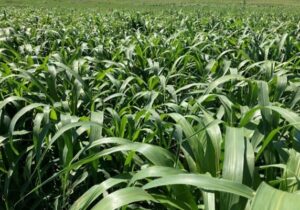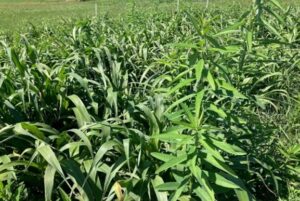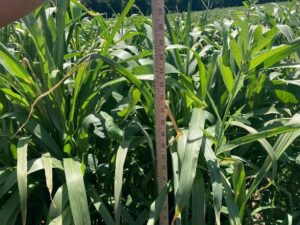Author: Liliane Silva, Ph.D., Assistant Professor and Extension Specialist,
Forage-Livestock Systems, Department of Animal and Veterinary Sciences, Clemson University
In the Southeast, most livestock operations are based on perennial grasses, such as tall fescue and bermudagrass. Summer annual forages are high-quality, fast-growing forages that can supplement forage production and quality to support animal performance. They are planted from April through late June and can be managed under grazing or for baleage production. Summer annual forages are a good alternative to support higher nutritional requirements of replacement heifers and stockers, for example. They can also help fill the gap in forage production when tall fescue stands are dormant or when unforeseeable weather conditions drastically impact forage production. Generally, they can be ready for grazing in 45 to 60 days.
There are several summer annual forages adapted to South Carolina. The most used grasses are crabgrass, pearl millet, sorghum, sorghum-sudangrass, and for legumes, cowpea, and sunn hemp. Crabgrass is productive, with crude protein (CP) around 15%, and can be managed for reseeding at the end of the season. Pearl millet is high yielding with a CP concentration of 14% and has higher drought tolerance than sorghum and sorghum-sudangrass. Sorghum and sorghum-sudangrass are high-yieldings with about 16% CP. They require proper grazing management to avoid issues with prussic acid poisoning or nitrate toxicity, mainly when drought or frost events occur. Sugarcane aphids can occur, and controlling them is critical to avoid yield and quality losses.


Incorporating legumes into grass-based stands helps add organic nitrogen to the system, improving forage quality and soil fertility. Both cowpea and sunn hemp are viable options for mixtures with annual summer grasses (e.g., pearl millet). Adjusting seeding rates and management practices when using forage mixtures is crucial. These legumes tolerate grazing and should be managed under rotational management to allow proper resting time for plants to recover and regrow. Sunn hemp can tolerate drought, and grazing should start around 45 days after planting when plants are around one to three feet tall. Always rely on measuring forage mass on paddocks to adjust the stocking rate and fine-tune your rotation plan. A pasture ruler or grazing stick (Fig. 3) is recommended to determine forage height and estimate grazeable forage mass. Contact your local Extension agent for help identifying the best forage species and management practices to be implemented in your operation.

Clemson University Cooperative Extension Service offers its programs to people of all ages, regardless of race, color, gender, religion, national origin, disability, political beliefs, sexual orientation, gender identity, marital or family status and is an equal opportunity employer.

We blend in Sunn Hemp in our Southeastern horse pasture seedlings.